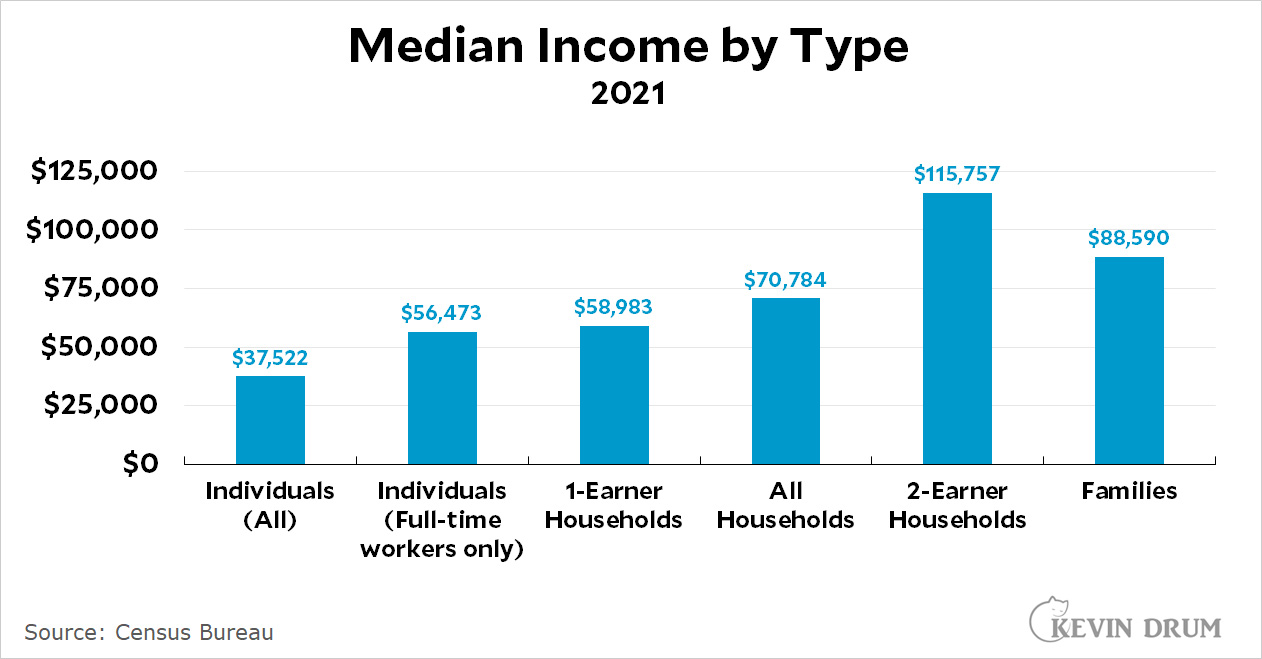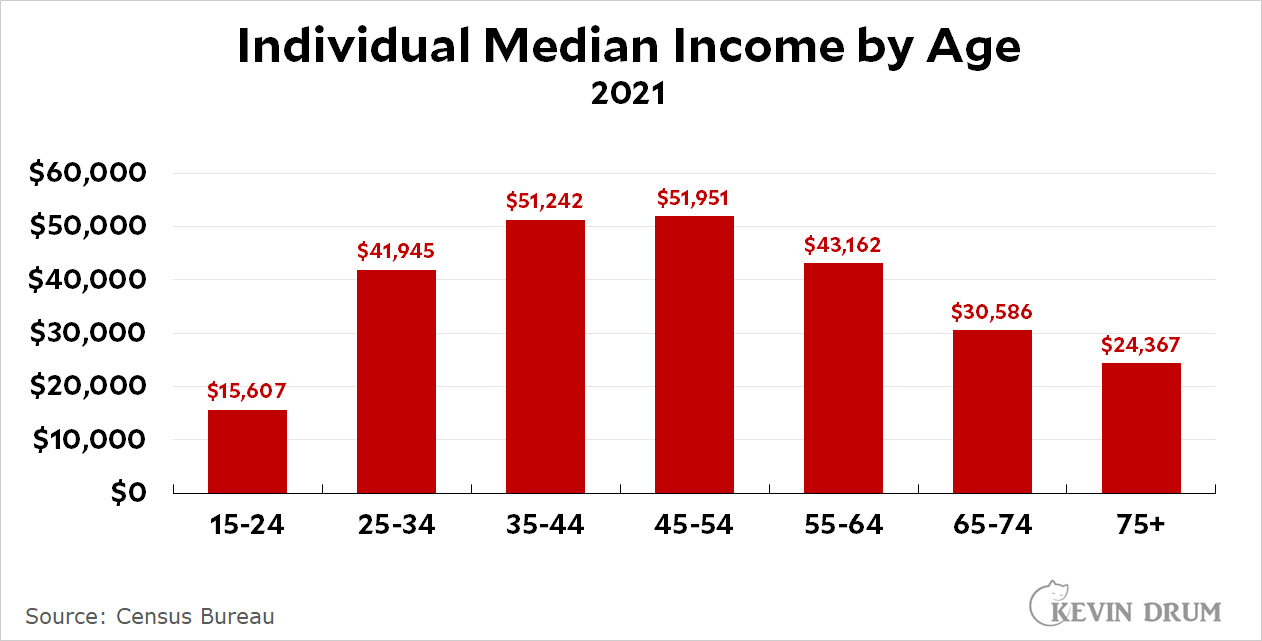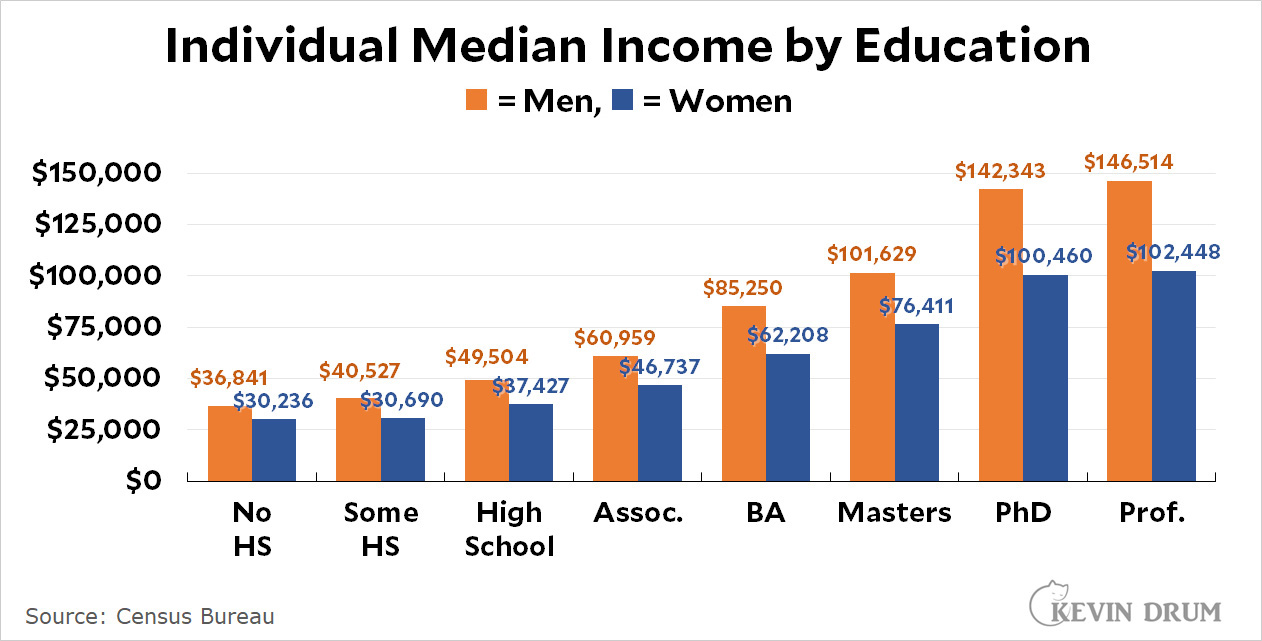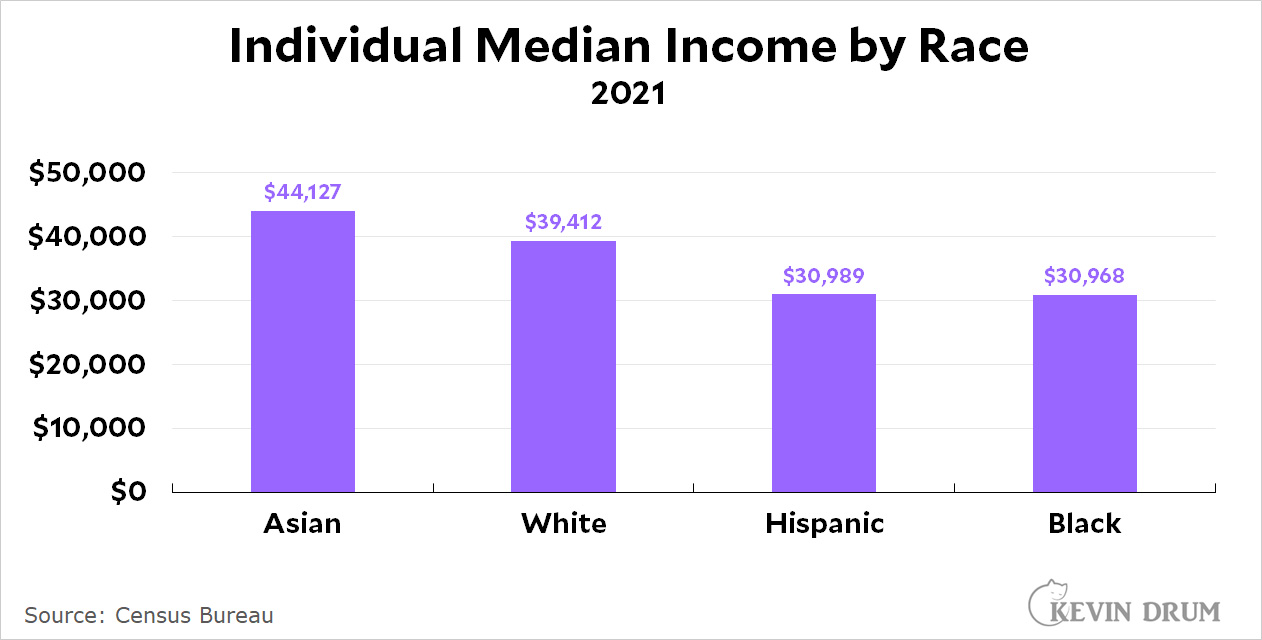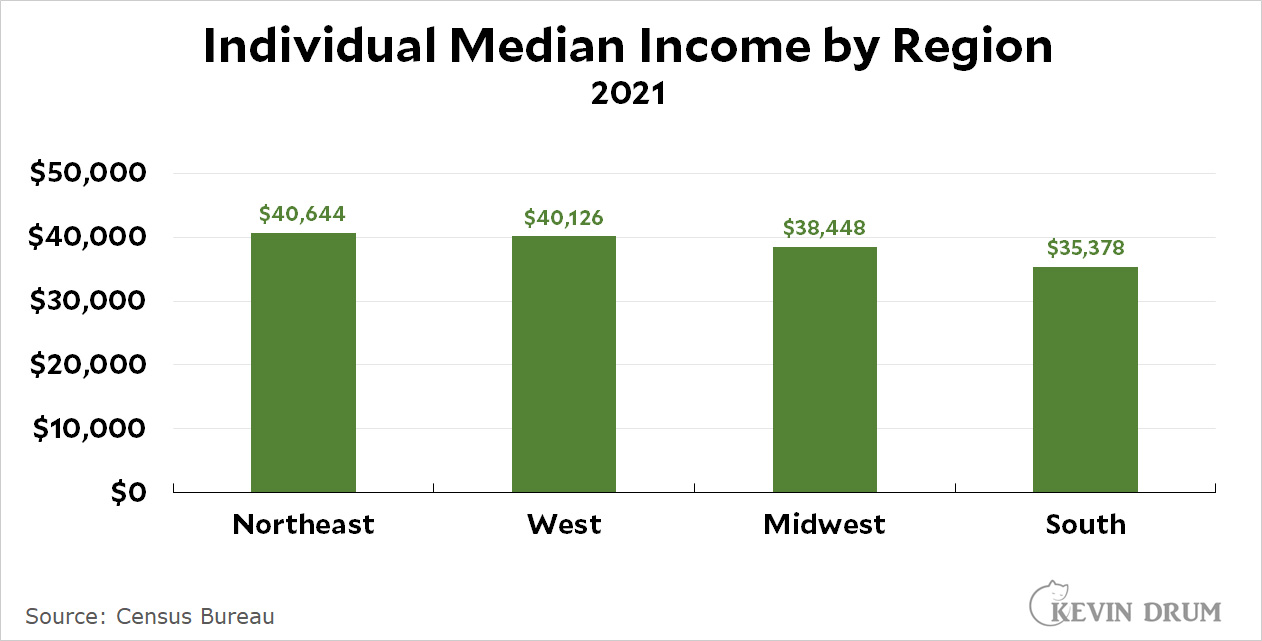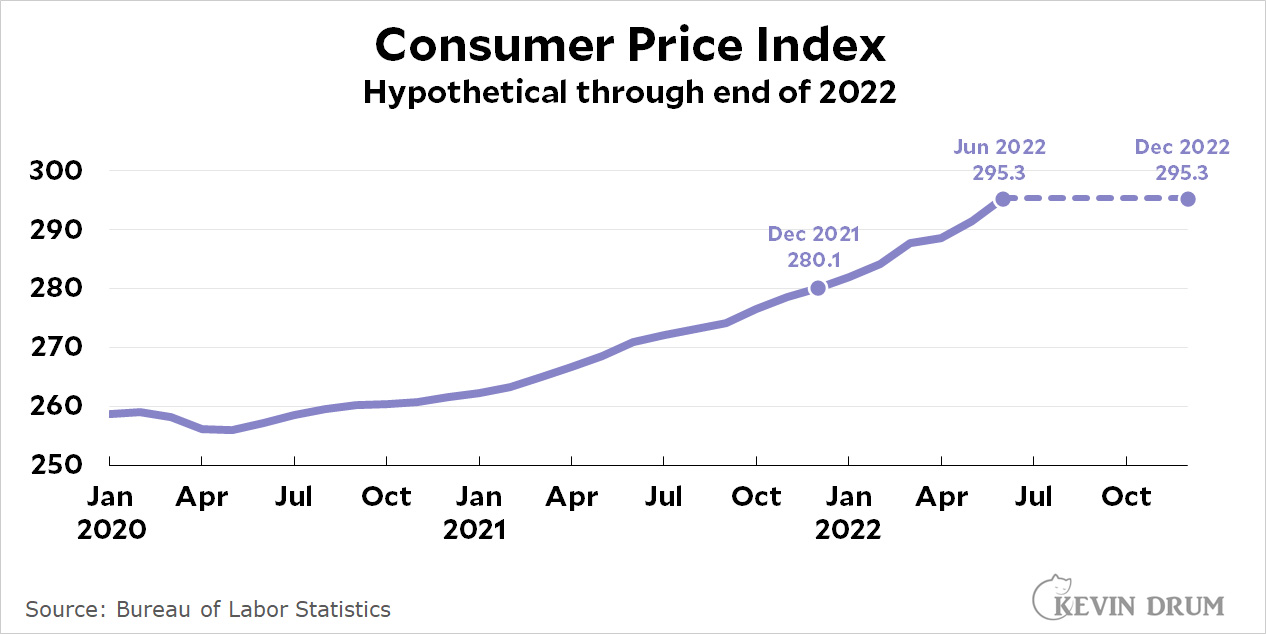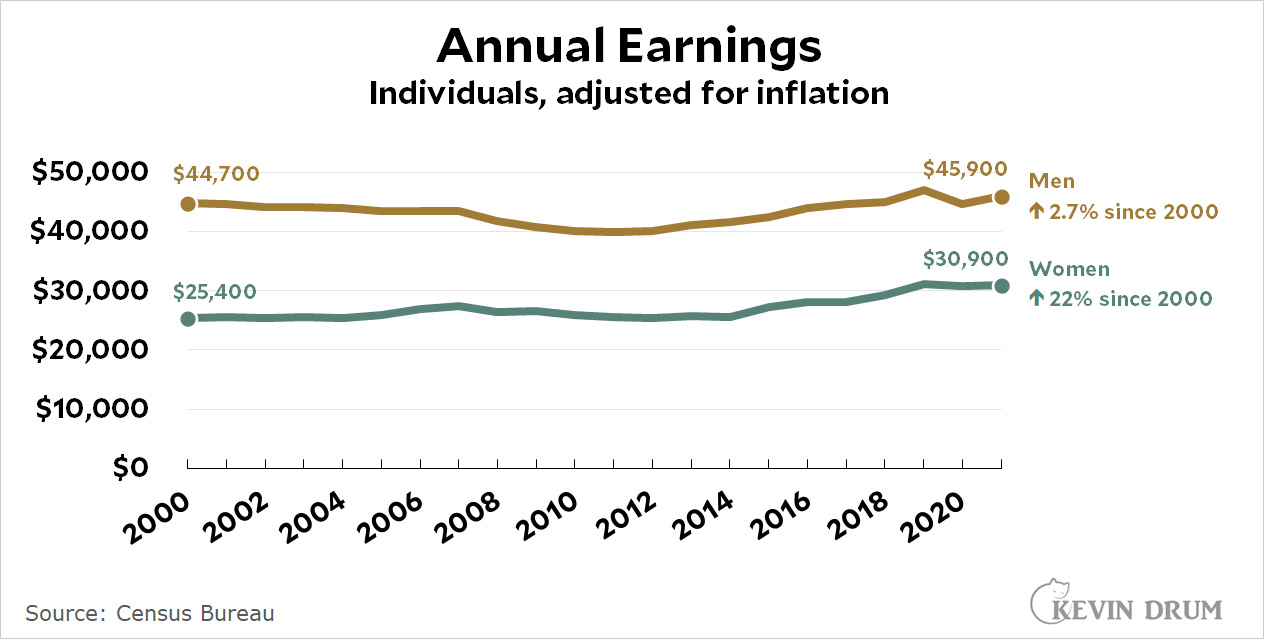Where have I been all day?
Well, I woke up a little late and found nothing interesting in the news. The queen is still lying in state. The Russian army is still inexplicably incompetent. The FBI is still issuing subpoenas to the 1/6 rioters. Railroad owners are still threatening to shut down the entire country's rail system. And LA's sheriff is still a huge douchebag.
So I ate breakfast. Then I decided to let Charlie into the yard for the first time in several months to see how he did. Answer: he roamed farther than I'd like, but still only a couple of houses away and he came back of his own accord.
Then I ended up spending a bunch of time on some charts, but I got hungry before I was finished so I went to lunch and then bought myself a pair of astronomy pants.¹ I figured I would post the charts when I got home, but a friend sent me a question that I figured I could answer right away and . . . it turned out I couldn't because the stupid Census Bureau doesn't provide easy access to old income figures.²
Anyway, here are the charts. They aren't designed to make a point, just to satisfy some curiosity on my part. They show which categories of the economy are contributing the most to inflation. I left out gasoline and housing, since they present some difficulties I didn't feel like taking the time to solve, but everything else is there. Note that this time I simplified the charts by calculating the trendlines and then erasing the actual data.


 ¹What are "astronomy pants," you ask? Well, it's pretty warm out here, and years of chemo has made me cold blooded. So I normally wear shorts when I go out. But twice I've tripped and skinned my knee, so I figure it's time to wear long pants even if I don't like them. So I got some.
¹What are "astronomy pants," you ask? Well, it's pretty warm out here, and years of chemo has made me cold blooded. So I normally wear shorts when I go out. But twice I've tripped and skinned my knee, so I figure it's time to wear long pants even if I don't like them. So I got some.
²In case you're wondering, he wanted to know how much annual earnings had changed since 1979 for (a) men, (b) 25 years and older, (c) with only a high school education, and (d) who are working full-time. The answer, adjusted for inflation, is $1,214 in 1979 and $952 today. That's according to the Census Bureau, anyway. The BLS has a different estimate. Note that virtually all of this decrease took place in the supposed boom times of the 1980s.



